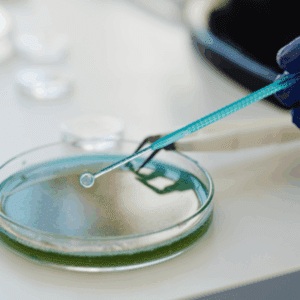What determines the best treatment approach for a patient’s myelodysplastic syndrome (MDS)? Dr. Abhay Singh of Cleveland Clinic shares how he works with patients to choose therapy, explaining key factors that guide these decisions such as anemia, side effects, impact on lifestyle, as well as cost. Dr. Singh also emphasizes the importance of ongoing conversations with your care team to ensure you’re getting the best possible outcome.
Dr. Abhay Singh is a physician specializing in acute and chronic leukemias at Cleveland Clinic and serves as Assistant Professor of Medicine at the Lerner College of Medicine of Case Western Reserve University. Learn more about Dr. Singh.
Related Resources
Transcript
Jamie Forward:
What factors should be considered, or do you consider when working with a patient to choose a treatment option?
Dr. Abhay Singh:
I think anemia is by far the most common presentation for patients with low-risk MDS.
So, whenever I’m making a decision for patients with low-risk MDS, I’m always thinking certain markers that can help me guide decision-making between one treatment or the other. And those markers typically are their erythropoietin levels, transfusion burden, how much transfusion requirements are there. And then, based on these factors, you can often decide between erythropoietin-stimulating agent and luspatercept (Reblozyl). I think convenience is another thing. And then, physician who’s treating their familiarity is an important one as well.
Then cost and insurance coverage also play a huge role in the decision-making. I think there are so many treatment options. At the end of the day, my decision-making is what is the most appropriate and the best care for my patient. And that’s what goes up top.
And then, we’d look at the secondary factors, looking at toxicities and matching up if there’s something that can be more harmful than beneficial for a patient. And obviously, that goes down lower in the list. And so, cost and insurance also play a role there as well.
Jamie Forward:
Okay. And what questions should patients be asking their healthcare team when they’re considering the treatment options?
Dr. Abhay Singh:
Yes. I think some of the things that are important to ask are so inherently, myelodysplastic syndrome increases the risk of cardiovascular disease, atherosclerotic disease, stroke, hypertension. So, I think some of the things, some of the side effects that you have to take into consideration are if someone has had a recent stroke, recent heart problem, then tailoring therapies based on that is an important one.
And also, the time spent in the hospital because being transfusion dependent takes a lot of time away from work, takes a lot of time away from their loved ones. So I think to balance with quality of life, it’s important to choose a treatment that keeps patients out of the hospital, that keeps patient out of the infusion centers. So the treatment that would give them least transfusion dependence and most time away from the hospital, a higher hemoglobin level likely because that’ll take away the shortness of breath or easy fatigability so that they can do more and add to the quality of life.
So, I think discussing all these factors with your physician is really, really important. And I think most treatments we should give, let’s say, this can vary, but roughly eight to twelve weeks for those treatments.
And if they’re not working, we have many options. So, discuss with your physician. Many times what we see is that there’s a treatment started and then our patients stay on those treatments for months and months, if not a year or two. And they’re not deriving the benefit that they should or deserve to have that transfusion dependence. So, they’re still dependent and transfusion dependent. So, ask your doctor in three months that is there another therapy that I would be eligible for and that would be more fruitful for my condition?



